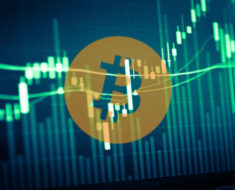A new paper out by four researchers at the University of Tulsa as well as Tel Aviv University states that their study points them in the direction of pinning the surge in the value of Bitcoin in 2013 on one person.
The rise in value of Bitcoin in 2013 in particular was astounding by most standards. It went from being worth around $150 at the beginning of that year to around $1,000 at the end of the year. The paper goes on to warn that there is a lot of potential for price manipulation within something like Bitcoin. They say that if the cryptocurrency wants to be considered more respectable in mainstream circles, then it really ought to focus on clamping down on the ways in which it can be manipulated. There are simply too many opportunities for that at present.
There is no central authority that governs Bitcoin, so it is reasonably easy to see how it could be manipulated with ease. The paper says that two bots (they believe both were created by the same individual) are what caused the price spike in 2013. Those two bots are named “Markus” and “Willy” in the paper. The origin country of those bots is listed as “??”.
The bots would gather up Bitcoins throughout much of 2013, and the paper outlines in detail how they would racket up prices of Bitcoins by doing so. On the days when the odd behavior of these bots was active, the value of Bitcoin tended to rise. On the days that they were not active, the value seemed to decline slightly.
Some countries are legalizing Bitcoin as an acceptable form of currency to be traded within their borders. Japan did this in 2017. However, these researchers want to warn people that there is a lot of suspicious activity in these currencies, and they want every country to be aware of what it might be getting itself into if it takes the extreme measure to legalize the use of a cryptocurrency for regular trading purposes. This could be just about the worst thing that a country does depending upon the circumstances.
The fact that there is still so much manipulation at this late hour is a sign that there is a lot of room for growth when it comes to how cryptocurrencies are understood, and how they are used in the marketplace in general. There is still so much yet to do.
Dil Bole Oberoi





